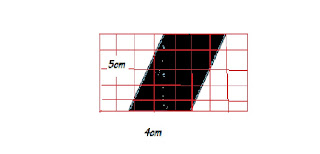This is how you make it a fraction :
You can see that you can split 40 and 26 into 2 or divide it by 2 . So you take 40 and 26 and dived it by 2, you do these to both of numbers because what ever you do one number you have to do it with the other number. So if you divide 40 by 2 you get 20 and if you divide 26 by 2 you'll get 13 . So thats your answer 13 over 20 .
This is how you make it a decimal :
This is how you turn13 over 20 in to a decimal number. You have to divide 13 and 20 by 20.You divide it by 20 because the denominator which is 13 always has to equal a decimal number . So if you divide 20 by 20 you get 1 and if you divide 13 into 20 you get 0.65 so thats your answer 0.65 .
This is how you make it into a percent :
This is how you turn it into a percent.You take 13 over 20 and you divide it by 5. You have to divide it by 5 because the bottom number which is 20 has to equal the number 100 because percent means it's out of 100 .So if you divide 20 times 5 you get 100 and if you divide 13 by 5 you get 65 and thats your answer 65 percent.

Heres a link that might help you :http://www.mathplayground.com/Decention/Decention.html




























